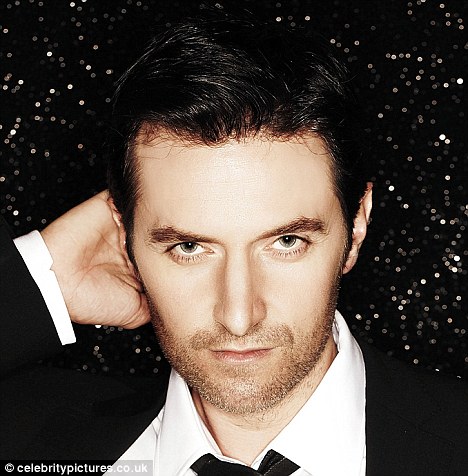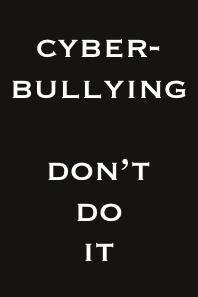The sonority of languages we cannot hear
Still thinking about what to do.
Which led last night to zoning out on the back porch, watching fireflies till the mosquitoes got too greedy, and then continuing the zoneout in front of the TV set. Saw this PSA and was transfixed. Ran to the computer and watched it a few dozen more times.
I’m entranced by the internal space and rhythm of the language — American Sign Language or ASL (I was fascinated to learn while writing this that ASL and British Sign Language [BSL] are not cognate languages — and indeed, the fingerspell for BSL is strongly different because the letters use both hands. ASL is derived from the French sign language tradition. If you learned fingerspell in the US look at the link to BSL above — it’s truly fascinating. Interestingly, LSM [Mexican sign language] is cognate to ASL but apparently not to Spanish, although you can also fingerspell into the Spanish language).
All of the words are presented in a particular plane directed at the viewer, and even though the spot is only thirty seconds long by the first ten seconds I feel myself responding physically to the speaker. I particularly like the way the acronym CPR is signed: this begins at 0:15 with the letter C (the speaker opens her right hand and forms her fingers in the shape of a C), dips down to make the P (thumb inserted between the index and third fingers, with the palm of the hand toward the speaker) and then smoothly flips back up to make the R (index and third fingers crossed with the palm away from the speaker). I also like the visual contrast between the fluidity of “it’s easy” (speaker moves her palms toward her body, a bit like she’s fanning air toward herself) and “effective” (the strongly crossed forearms with the hands in fists. Literally she’s saying “it works” — the crossed forearms with hands in fist is the sign for the verb “work”). Then her hands burst out of the space she’s created at the end of that phrase to move into the next sentence. I love that energy, but also the feeling of calm at the end when she brings her hands back to her solar plexus.
This is beautiful, sonorous speech. I wonder whether Mr. Armitage could play a Deaf character or would want to — having to say so many things within a rhythm he created with his hands. I wonder how the Deaf community feels about having hearing actors play Deaf characters, as there’s a Deaf theatre scene in the larger cities in the U.S.
But to demonstrate, acknowledging these reservations, these are caps from the interview with him on the second season Robin Hood DVDs, contrasted with signs from the American Sign Language Handshape Dictionary. (A handshape dictionary is a reference work that allows you to locate the meaning of the sign from the form of the sign as it is actually made — as opposed to an English / ASL dictionary where you look up a word and it explains how to make the sign. There are 26 handshapes in ASL. Open palm is the sign for “B,” so if you see a sign that begins with an open palm you look in the “B” section of the dictionary. Then you look as necessary for one-hand signs and two-hand signs.) Apologies to all the Brits for doing this in ASL. Until about twenty minutes ago I didn’t realize the languages weren’t cognate. I only know the little bit of ASL that I know because of my cousin, who’s a fellow U.S.-American.
This is an obvious one: the ASL sign for “ask”:
 Source: RichardArmitageNet.com
Source: RichardArmitageNet.com
Then there’s this one, for “move forward”:
Which you can imagine him being just about to start here:
 Source: RichardArmitageNet.com. This is also a classic instance of what I originally called “Armitage equilibrium,” which always has a nice effect on me.
Source: RichardArmitageNet.com. This is also a classic instance of what I originally called “Armitage equilibrium,” which always has a nice effect on me.
Here he’s signing the ASL letter “d”:
 Source: RichardArmitageNet.com
Source: RichardArmitageNet.com
And this is the ASL for “narrow,” also a nice instance of Armitage equilibrium:
 Source: RichardArmitageNet.com
Source: RichardArmitageNet.com
Speech with the hands: beautiful. Sonorous. For all concerned.







I taught at the Alabama School for the Blind for three years, which was part of the Institute for the Deaf and Blind. Oddly enough, people assumed I knew sign language. No–I actually learned braille, and by sight, not by touch. 😉 After all, they could hear me; they just couldn’t SEE me that well.
However, I truly loved watching people sign at convocations. Someone who is naturally graceful and expressive like Richard is a particular treat to watch sign.
I did not realize there was such a difference between American and British sign language, either. Fascinating stuff!!
I actually learned how to sign “We Wish You a Merry Christmas” for the institute Christmas party, but have long since forgotten. 😦
LikeLike
It’s really exhausting to do that kind of signing — those people always impress the heck out of me.
LikeLike
It is interesting when I was diagnosed with a severe hearing loss I was not encouraged to learn how to sign. The reason being that where I live there is not a large deaf community and so I would not use it enough for it to be of benefit. I lip read and always have. Which means that I can mix with hearing people with more ease ease than somebody who only signs.
As to a hearing person playing a deaf role I have no problem.
LikeLike
My impression, too, is that a lot of what one learns depends on the political mood of the moment. I only know one Deaf person well. My cousin (who is congenitally Deaf) started school in a period where the emphasis was on lip reading and speech. She never really learned how to speak clearly and her lip reading is mediocre as well. When she was about twelve the emphasis changed to signing. She signs evocatively (my mother would say “emotionally,” but that’s not really fair, I think) and writes English with few mistakes. If she were born now her parents would have been pressured to have her fitted with a cochlear implant, I imagine.
LikeLike
That’s a good point, Khandy. For deaf people who live in more rural areas here such as the one I live in, there would be few who would know sign language.
I do not know if ASD encouraged both signing and lip reading for its students or not.
Of course, those who stayed in Talladega where the schools were located always did have that community of hearing disabled people. But I sometimes think their world became very insular. Better to have more exposure to a variety of people, hearing, partially deaf and deaf?
LikeLike
Very interesting post Servetus.
Going somewhat off-topic here, my comment is not related to sign language, but to RA’s use of his hands when he speaks, especially as himself rather than playing a role. Coming from a culture that uses hand gestures and movement of hands as part of everyday speech and conversation, I find his hand gestures familiar and comforting, and because of his grace in movement, beautiful. It adds to the expression of his thoughts and emotions.
But, living in a culture that is not always comfortable with the marriage of hand gestures to speech and conversation, I do wonder if he’s often advised not to gesture so much in interviews, and maybe why sometimes the camera focuses away from his hands. I alway regret when we can’t see his hands as he speaks.
LikeLike
To clarify, I meant the culture I live in, not the UK, since I’m not truly familiar with how they view hand gestures and speech in general.
LikeLike
I really miss those beautiful and eloquent hands when I don’t see them in interviews. To me, it is part of the charm and appeal of this talented gentleman.
LikeLike
Musa, I think one interesting thing to observe is how much his hands come into play in different roles. Lucas, for example, never talks with his hands except when he’s angry, while Monet often uses his hands. He seems to have made it part of characterization.
I admit that in my rather pronounced Whiteness I find it distracting when people talk with their hands — unless I am already feeling affection for them, then it’s endearing 🙂
LikeLike
Many years ago I took a sign language class, and discovered that there was different signs for different countries – I thought it was global:) – The dream was to work with deaf children, but the job never came, and I have now long forgotten the signs.
It really could be interesting to see RA in such a role. If he should play a person who was born deaf, I would miss his beautiful voice, but on the other hand he was allowed to use his hands – and really show his talent for facial expressions.
LikeLike
I agree that would be a very interesting role. A year ago I worked with a deaf person who knew how to sign and lip read and one of the things that caught my attention is that he is one of the most expressive persons I’ve met, I realized how much your face and body can express with no words.
OML 🙂
LikeLike
Though I think that my cousin often suffers from people thinking that she’s “overly” emotional because her signing is so physical. Then again, we grew up in a very emotionally restrained part of the U.S.
LikeLike
I definitely think he could do really well in such a role. He is so marvelous in using his entire body to express each character–I am sure he would speak volumes to us.
LikeLike
I found the PSA amazing. She has such expressive hands and I’m sure that for a hearing impaired person she is easy to follow.
I am endlessly fascinated when I watch RA in interviews. His hands seem to express a lot more than just what he is saying audibly. Because he does use his hands so much I find it even more remarkable that when he is acting he is able to restrain these actions although they appear to be second nature to him. It never ceases to impress me to see how controlled his body movements are. In interviews he reveals a lot more of who he really is although I’m sure there is a lot that he doesn’t give away. In more recent interviews he does seem a lot more comfortable in front of the cameras.
I was just comparing two different interviews – the first with Lorraine on GMTV in 2007, the second is also with Lorraine and is from May 2010. He is noticeably very shy in the first, especially when she says, “look at you, you’re a beautiful boy”! He almost doesn’t know where to look. In his May 2010 one with her even thought he still does the leg tuck he looks way more relaxed and even more gorgeous!
LikeLike
I agree, I think it’s amazing that he has so much control over his extraneous gestures that there are only a very few that move with him from character to character (the nervous lip licking being one).
LikeLike
I’m impressed that so many of you sign, read lips, know braille!! I can honestly say that everytime I see my grands (ages 2-8) sign and sing “Jesus Loves Me”, it makes me teary! Just beautiful watching those little hands. When I’m in an audience where there is a person signing alongside the speaker, I find myself entranced with the signer’s hands and forget to listen to the speaker!
Yeah, he could do it. Hands down. No pun intended. OK, maybe a little pun. And I thought that sign language was universal also! Learn something new every day.
LikeLike
I just want to say I only know about 150 words of ASL. But I can fingerspell like a demon 🙂
LikeLike
So interesting! I’ve always been fascinated by his interviews. How Richard uses his voice, his hands, his body, always conveys calm and equilibrium.
I’ve noticed he has improved a lot, he has earned confidence when out as himself. I also have noticed the difference Teuchter says about in her comment, between that GMTV 2007 interview with Lorraine and his latest. However, that old interview is one of my favourite. Thanks, Servetus, for another great post. MG
LikeLike
I agree, the development / performance of confidence has expanded drastically. Thanks for the kind words.
LikeLike
The reason I think Richard uses his hand in interviews is not only to add credence to a point of discussion but as a trained dancer, his hand evoke emotions or the gracefullness to interpret the movement of the dance sequence for the audience.
LikeLike
This is a really great point, Tedgirl.
LikeLike
[…] language. He definitely has the hands for it. I’ve reflected on this question before — Armitage as possible Deaf character. Wouldn’t one poem in sign be an amazing gift to the […]
LikeLike
An only half-unserious proposal for Richard Armitage’s next audiobook | Me + Richard Armitage said this on February 14, 2015 at 1:52 am |